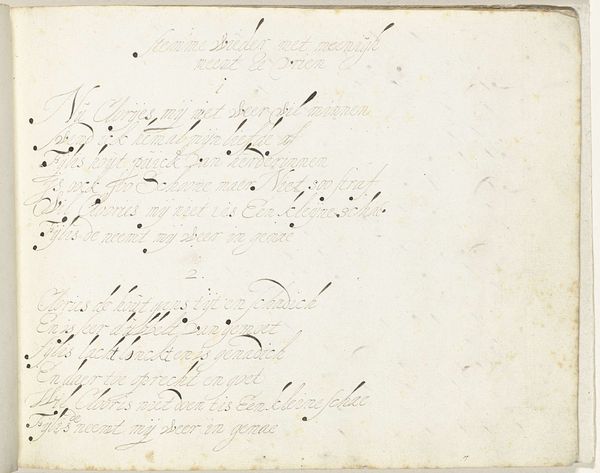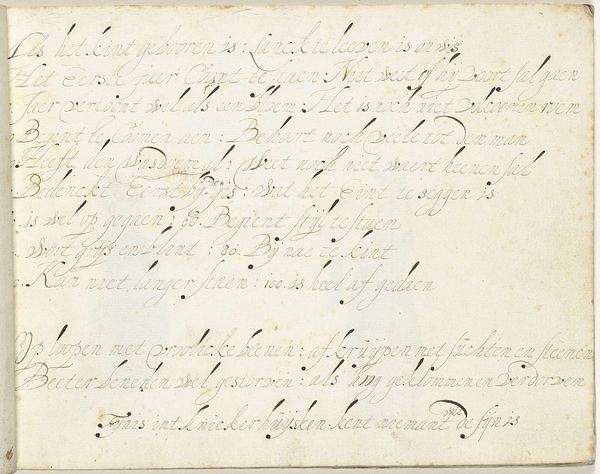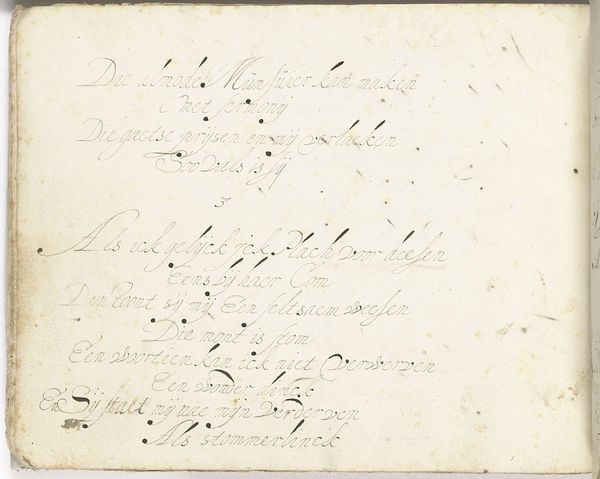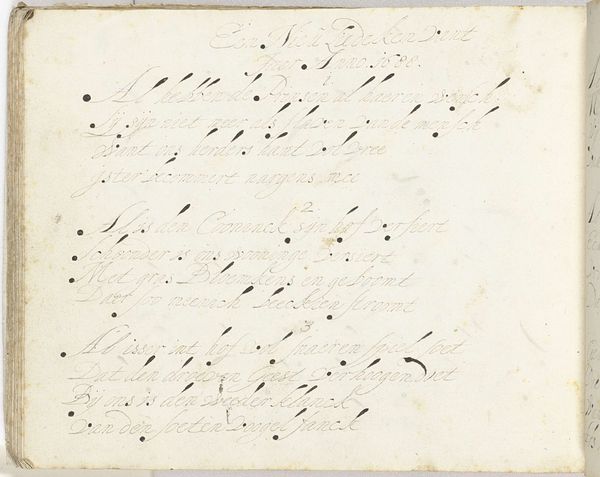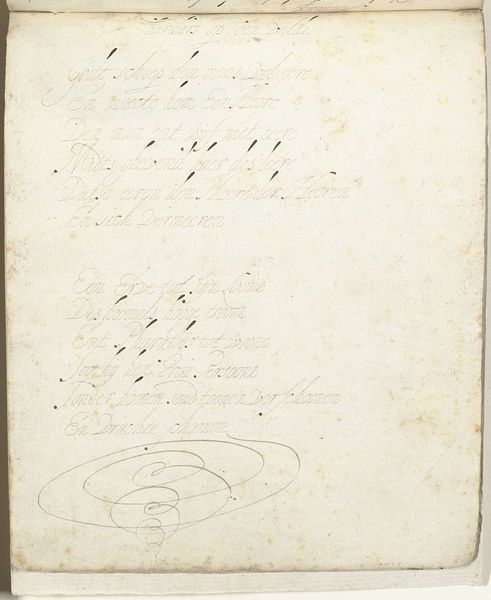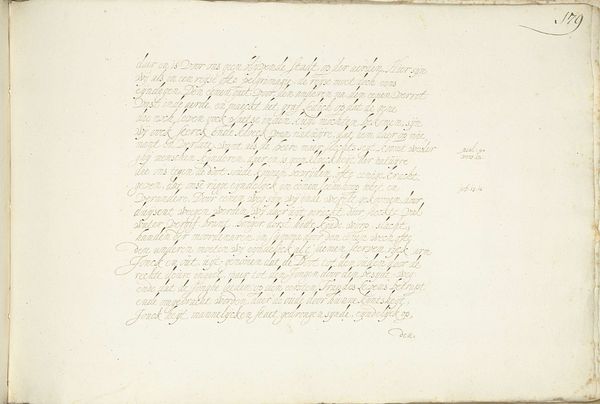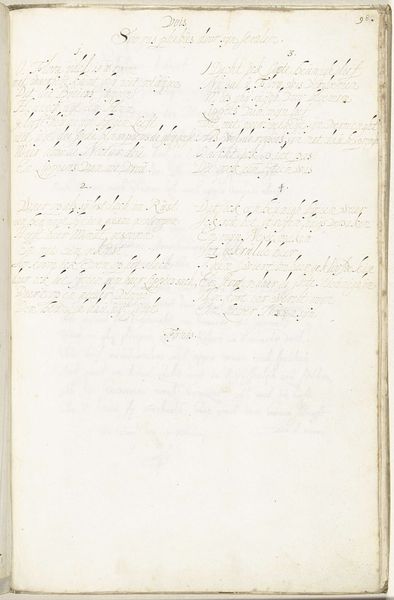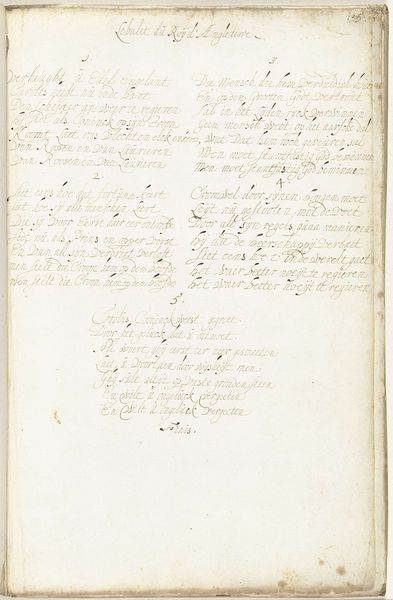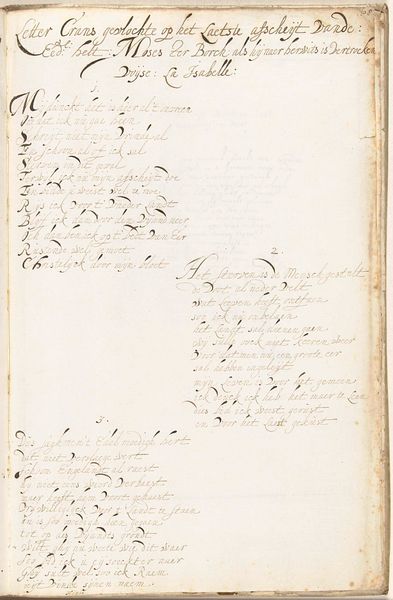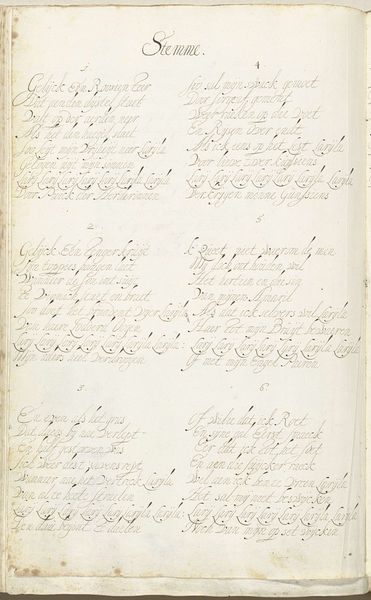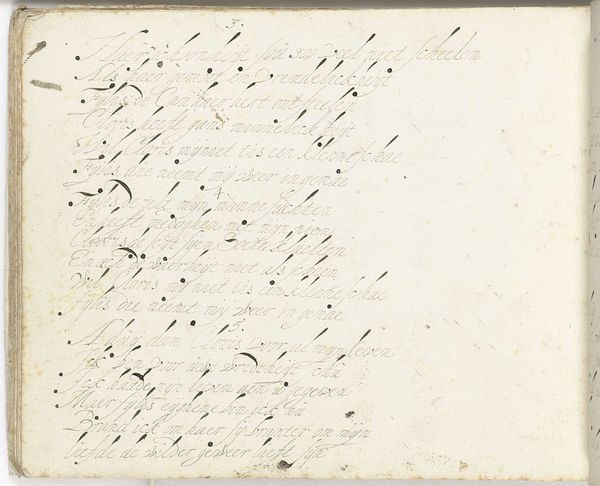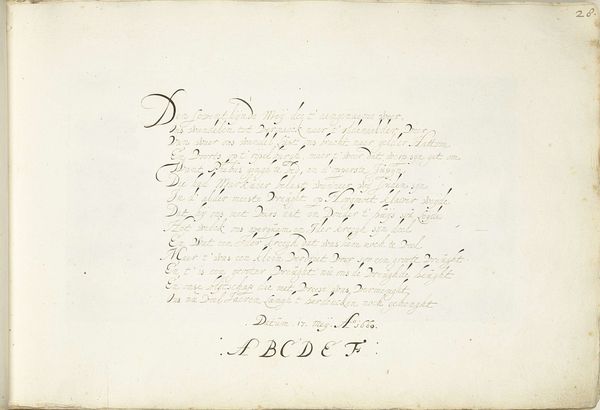
drawing, paper, ink
#
drawing
#
hand written
#
hand-lettering
#
dutch-golden-age
#
hand drawn type
#
hand lettering
#
paper
#
personal sketchbook
#
ink
#
hand-written
#
hand-drawn typeface
#
fading type
#
genre-painting
#
sketchbook art
#
miniature
#
calligraphy
#
small lettering
Dimensions: height 155 mm, width 211 mm
Copyright: Rijks Museum: Open Domain
Curator: So, we're looking at "Poem with Praises to a Woman," a drawing by Gesina ter Borch from around 1646 to 1650. It's ink on paper, and currently residing in the Rijksmuseum. I am struck by the intimacy of the handwritten text, and I am wondering how we might unpack the meaning behind its presentation. What stands out to you? Editor: It looks like a page from a personal journal or sketchbook. The handwriting is beautiful, almost like calligraphy, but faded. What can we learn about the cultural and historical background here to understand what this poem praises? Curator: Ter Borch was part of a highly educated family. This drawing offers us a glimpse into the world of women and their intellectual lives in the 17th century. The act of writing, especially poetry, was often a carefully cultivated skill. These verses challenge the notion of women being relegated to domestic spaces only. Editor: That's fascinating! So, the "praises" could be an assertion of a woman's intellectual and emotional depth, challenging patriarchal norms of the time? Curator: Exactly. Ter Borch uses the seemingly private medium of the sketchbook to voice praise, likely of another woman, implicitly carving out a space for female authorship and relationships. How do you think the visual presentation complements or challenges the themes within the text? Editor: The intimate scale of the work definitely adds to that sense of a private, almost secretive, world. It makes me wonder who this woman was and what their relationship meant to Gesina ter Borch. Curator: Precisely. And, by situating this piece within broader intersectional narratives we see a glimpse of queer relationships. Understanding the networks in which ter Borch operated helps us appreciate the nuances of gender, identity, and politics embedded within this seemingly simple drawing. Editor: That's an eye-opening perspective. I didn’t realize how much context was packed into this single page. Curator: These historical fragments ask us to consider marginalized figures.
Comments
No comments
Be the first to comment and join the conversation on the ultimate creative platform.
